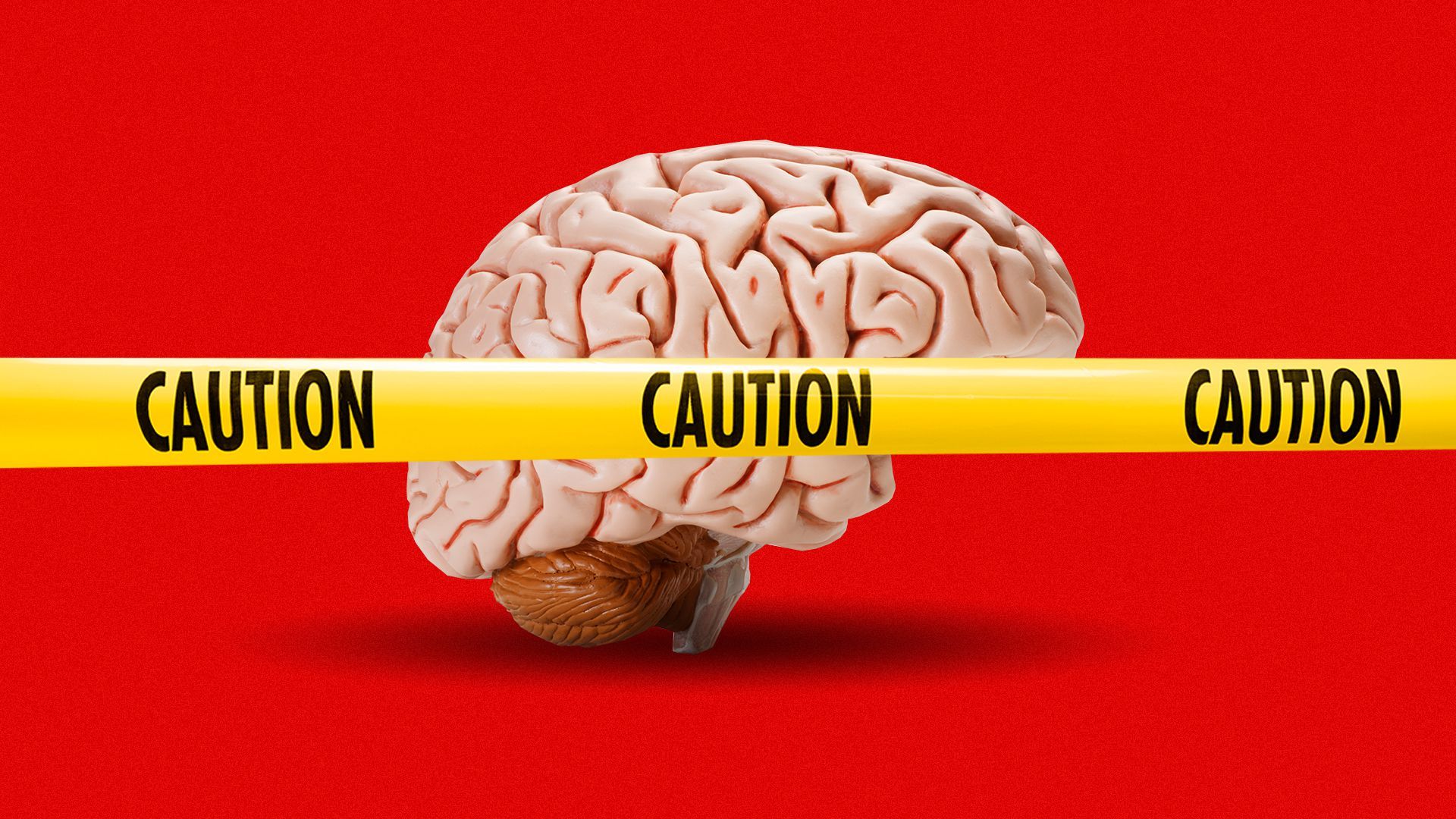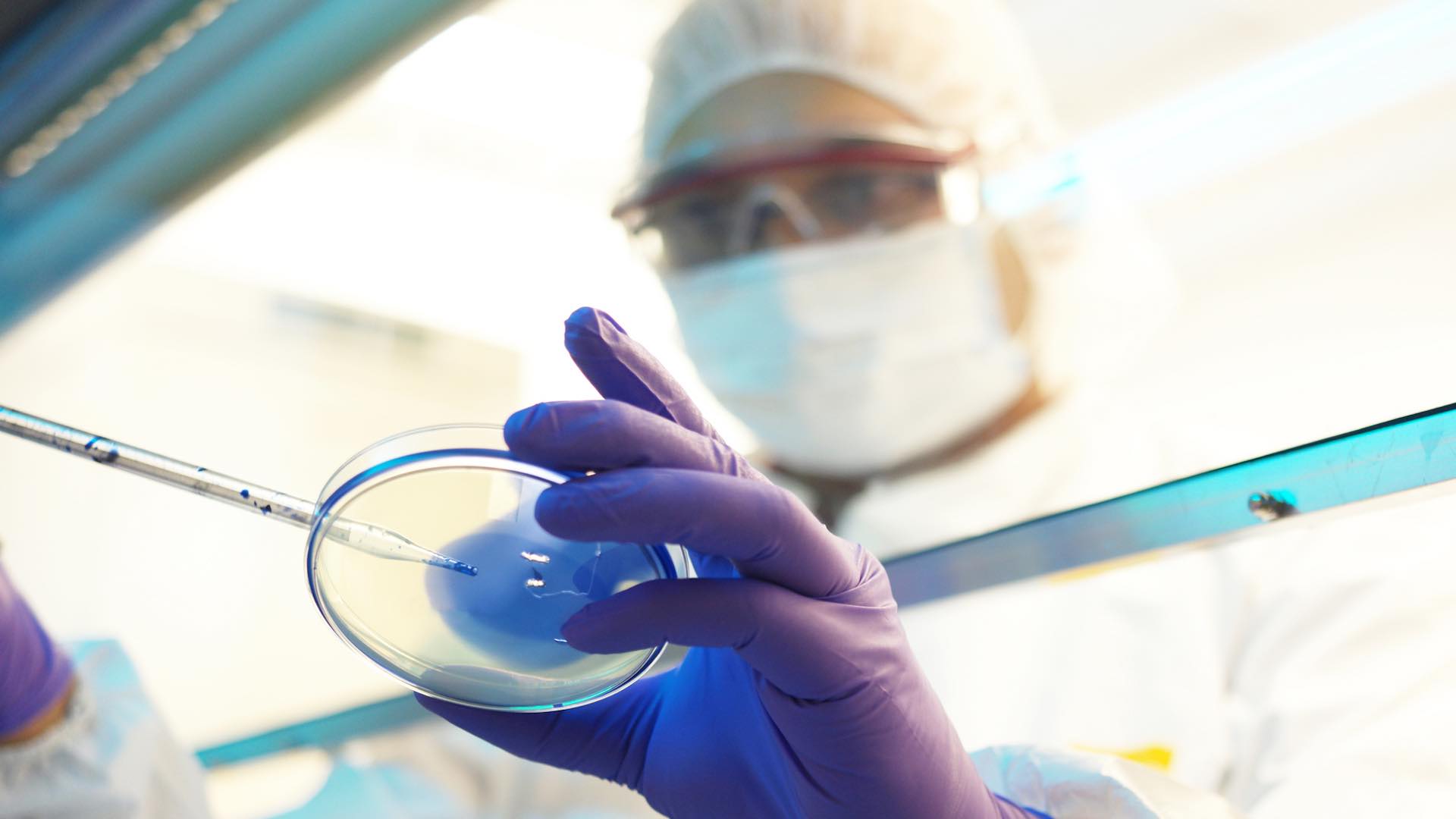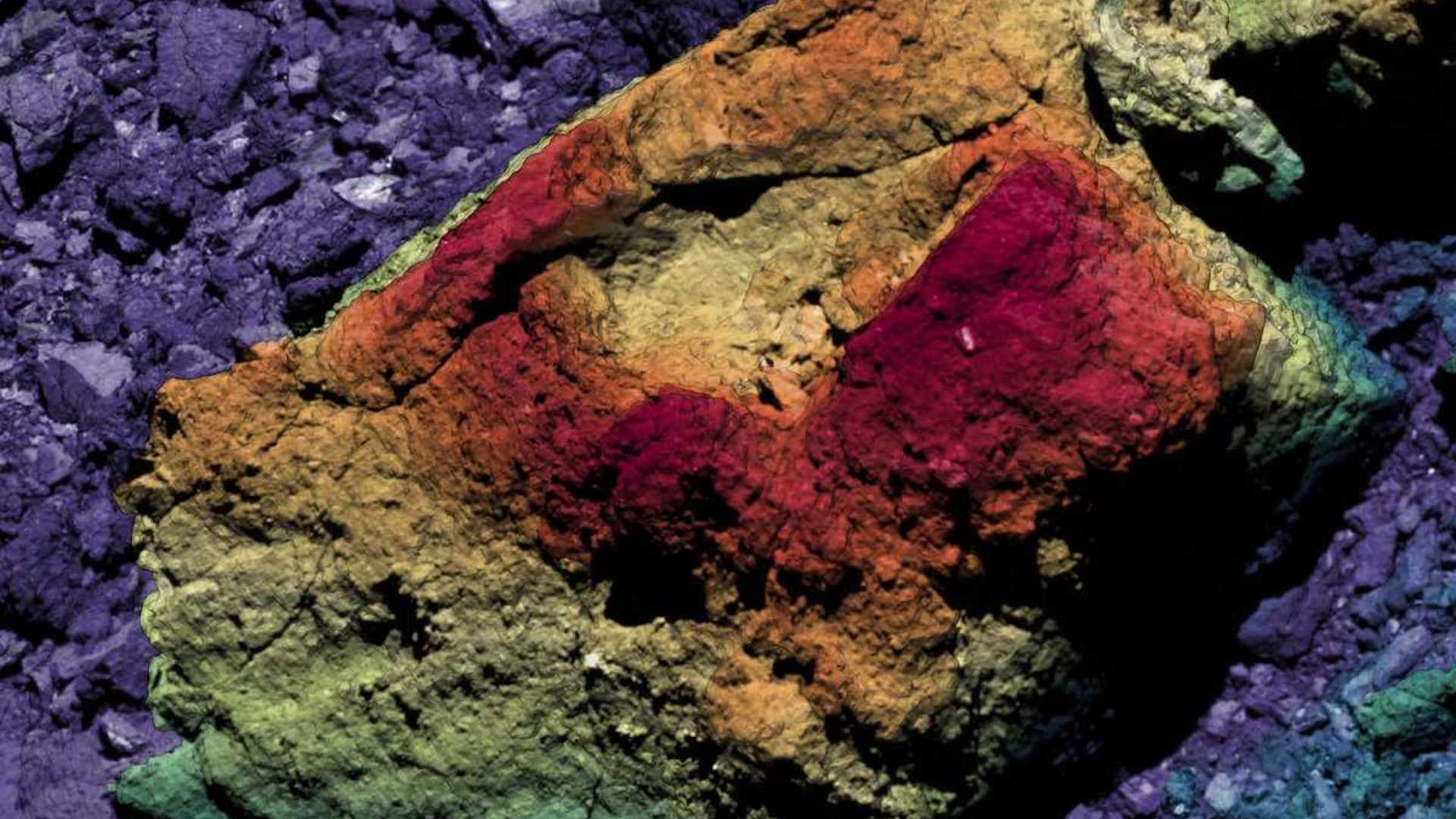| | | | | | | Presented By Amgen | | | | Axios Science | | By Alison Snyder ·Nov 12, 2020 | | Welcome back to Axios Science. This week we look at how the brain assesses risk in the pandemic, catch up on COVID-19 and more. Today's newsletter is 1,322 words, a 5-minute read. | | | | | | 1 big thing: The pandemic tests our decision-making |  | | | Illustration: Annelise Capossela/Axios | | | | As the pandemic accelerates in the U.S. and dire warnings come about the winter ahead, people are weighing the risks of celebrating the holidays with family and friends. Why it matters: The pandemic-holiday punch can distort our perception of risk, but there are a few good tips for smart decision-making in these unprecedented times. Where it stands: The virus remains a serious threat — 62,000 Americans are in the hospital for infections. - The CDC on Wednesday updated its guidelines for celebrating the holidays, emphasizing that small gatherings contribute to the surge in cases being seen.
How it works: Decision-making isn't an entirely rational process: It also tugs on the brain's reward and emotional circuits. - When we interact socially, for example, dopamine is released in reward pathways in an area of the brain called the ventral striatum. That interacts with another region, the ventromedial prefrontal cortex, which weighs the pros and cons of different actions.
- The amygdala and other parts of the limbic system that govern our emotions can also be engaged in decision-making.
- Together, these different regions of the brain assess emotions and information, tapping into our personality and tendencies for risk as well as our understanding of risk as it relates to our age and health, and arrive at a decision.
What's new: COVID-19 is presenting the brain with novel scenarios and information that influence our decision-making. - Many of us have never experienced a severe pandemic and the many unknowns that come with it, leading us to sometimes look to how others are responding. We also draw on our personal experience of the pandemic itself, especially if we've witnessed someone becoming ill or dying, for example, ProPublica explains.
- Our identity also strongly affects our decision-making, says Gaurav Suri, a computational neuroscientist at San Francisco State University. He points to mask-wearing, behavior that early in the pandemic was influenced by how we identify politically.
The flip side: There's also outside information that signals to the brain things are somewhat normal — stores are open, times passes, your dog looks the same — and the brain clings to that because we desire normalcy, Suri says. The result: People come to different conclusions about their risks and make decisions based on the interaction and strength of many different networks, he argues. What's next: The holidays will test our ability to assess our risk. - "Not only are we combatting this [pandemic] fatigue, not only are we combating this tendency for homeostasis, now we're combating the stirrings of memory, joy and meaning that accompany these holidays that involve getting together," says Suri.
What to watch: Biases — how a risk is framed and by whom, or what information is initially presented — can also influence our decision-making. - Understanding such cognitive biases could help public health officials present information about COVID-19 in a way that helps people properly assess risk, says Mauricio Delgado, a professor of psychology at Rutgers University.
How to assess your risk: - Take the time to proactively make a decision, says Erin Berman, a clinical psychologist at the National Institute of Mental Health.
- Do something to relax or decompress — run, walk, talk to a friend — before you make a decision, she adds. That can calm you down and reduce extreme thoughts you might have about your risk and benefits.
- Some experts suggest keeping a "risk budget," Kayt Sukel writes for Forge. By spending some risk on an indoor meal at a restaurant, some risk is then subtracted from the column you might have been holding for gathering with family. Such budgeting can help to mitigate risk and bring decision-making back into the realm of cognitive regulation while minimizing our emotions about it.
- Your emotions can also work for you. Research suggests that considering the risk of COVID-19 to others can lead us to make better judgments about safe behavior, says Becky Ferrer, who studies health-related risk perception at the National Cancer Institute. And studies of other diseases indicate that imagining someone we care about becoming sick can also shift our perception of risk.
- Keep in mind: Individuals have different tolerance for risk that should be respected, especially in these times of stress, says Delgado. There's enough to debate during the holidays.
|     | | | | | | 2. Catch up quick on COVID-19 |  Data: The COVID Tracking Project, state health departments; Map: Andrew Witherspoon/Axios Cases: "The U.S. is now averaging roughly 119,000 new cases per day — by far the highest daily average of any point in the pandemic," Axios' Sam Baker writes. Masks: The CDC updated its guidelines to say masks protect wearers as well as those around them. Vaccines: Pfizer and BioNTech say their vaccine is 90% effective against COVID-19, but there are distribution challenges and questions about whether it protects people from mild or severe disease, in which groups of people the vaccine is effective, and for how long. Go deeper: Listen to Pfizer's CEO discuss the vaccine on the "Axios Re:Cap" podcast. Treatments: Eli Lilly received an emergency use authorization from the FDA for its monoclonal antibody therapy for mild to moderate COVID-19. At-risk: People with intellectual disabilities and developmental disorders are three times more likely to die of COVID-19 than patients without them, according to a new analysis. The finding suggests the group be prioritized for vaccination, per NYT. |     | | | | | | 3. The top science and tech states |  Data: Milken Institute; Table: Axios Visuals Massachusetts, Colorado and California top a list of U.S. states with the greatest "capacity for achieving prosperity through scientific discovery and technological innovation," according to the Milken Institute's 2020 State Technology and Science Index released today. Why it matters: Addressing the factors that allow states to create more jobs and economic growth could help them recover from the pandemic's economic fallout and adapt to future downturns and disruptions. Maryland, Washington and Utah rounded out the top tier of states on the index, which has been reported every two years for almost two decades. Zoom in: "Utah did several things right," says study author Kevin Klowden, executive director of the Milken Institute's Center for Regional Economics and California Center. - The state is anchored by three universities (University of Utah, Utah State and Brigham Young University), matched investments by various tech and life sciences companies in the state, and sold people on the lifestyle, he says.
- "They built a critical mass, and that is incredibly important," he adds.
Methodology: The index uses 105 metrics in five areas (research and development inputs, risk capital and entrepreneurial infrastructure, human capital investment, technology and science workforce, and technology concentration and dynamism) to evaluate states. Key takeaway: "Policy matters tremendously. Geography and history are an advantage, but it is really about the states that invest and protect what they do," says Klowden. - The states consistently in the top 20 make an effort around education and linking people to jobs, he says.
- "You can only grow so much from poaching from other states. You ultimately need to grow the people internally."
|     | | | | | | A message from Amgen | | How proteomics helps assess disease risk | | |  | | | | Amgen's deCODE Genetics and a collaborator measured the relative levels of roughly 5,000 different proteins in plasma. The result: By combining information about genetics and proteins, scientists can find people with extraordinary risk for disease. Get more details on proteomics. | | | | | | 4. Worthy of your time | | One of Jupiter's icy moons may glow in the dark (Maya Wei-Haas — National Geographic) Sexual attraction is the oldest story on Earth (Ilana Strauss — The Atlantic) An ambitious breeding effort to save North America's ash trees (Gabriel Popkin — Science) The ocean carbon sink has set the next political hurdle (Drew Higgins — Hakai) |     | | | | | | 5. Something wondrous |  | | | A boulder on Bennu. Photo: UofA/JHU-APL/York University | | | | The asteroid Bennu has been orbiting the Sun not far from Earth, for about 1.75 million years, Axios' Miriam Kramer reports. The big picture: Researchers are learning all they can about Bennu in order to piece together the chaotic early days of our solar system and perhaps figure out how Earth eventually gave rise to life. What they found: The scientists behind a study in the journal Nature used images from NASA's OSIRIS-REx mission to Bennu to count craters on the asteroid's surface in order to estimate how long it has been in the inner solar system. - Older objects have had more time for craters to accumulate, and counting the features on planetary surfaces is a long-standing technique.
- "The amazing data collected by OSIRIS-REx at asteroid Bennu have allowed us to not just find impact craters across its surface, but to actually find and study the craters on the surfaces of boulders," study co-author Kevin Walsh said in a statement.
What's next: OSIRIS-REx nabbed a sample of the space rock, which will be returned to Earth in 2023 and will offer more clues about Bennu's — and Earth's — past. |     | | | | | | A message from Amgen | | Human data can inform clinical trial designs | | |  | | | | Proteomics can now identify proteins found at minuscule levels in the blood. Why it's important: Genetic risk scores, augmented by proteomics, could reduce the uncertainties that inflate the size, duration and cost of trials, especially cardiovascular outcome studies. Get more details. | | | | | | Axios thanks our partners for supporting our newsletters.
Sponsorship has no influence on editorial content. Axios, 3100 Clarendon Blvd, Suite 1300, Arlington VA 22201 | | | You received this email because you signed up for newsletters from Axios.
Change your preferences or unsubscribe here. | | | Was this email forwarded to you?
Sign up now to get Axios in your inbox. | | | | Follow Axios on social media:    | | | | | |








No comments:
Post a Comment